Insight and reactions to key industry coverage
“Pump Ed 101,” November 2011
Click here for full article.
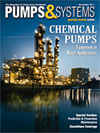 In Joe Evans’ November 2011 “Pump Ed 101,” an error appeared in one of the equation for suction specific speed. The correct formula is:
In Joe Evans’ November 2011 “Pump Ed 101,” an error appeared in one of the equation for suction specific speed. The correct formula is:
S = N√Q/NPSHr3/4
We apologize for any inconvenience this may have caused.
“HI Pump FAQs,” February 2011 & “Readers Respond,” March 2011
Click here for full article.
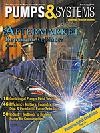 Can I have a complete design process of how the formula for the shaft deflection is derived? From the March reader respond, I though magazine was to re-publish the complete formula.
Can I have a complete design process of how the formula for the shaft deflection is derived? From the March reader respond, I though magazine was to re-publish the complete formula.
Jack Terlecki
Lee Ruiz (Pumps & Systems’ reader and letter writer in the March issue) responds:
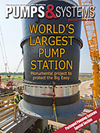 The step-by-step derivation of the H.I. FAQ shaft deflection formulas is made more complex because of the three different shaft sizes. In lieu of using the double-integration method with boundary conditions, I have employed the principle of superposition and have assembled the pertinent elementary beam equations for the solutions. An Excel file is attached with the formula development steps shown (available on www.pump-zone.com).
The step-by-step derivation of the H.I. FAQ shaft deflection formulas is made more complex because of the three different shaft sizes. In lieu of using the double-integration method with boundary conditions, I have employed the principle of superposition and have assembled the pertinent elementary beam equations for the solutions. An Excel file is attached with the formula development steps shown (available on www.pump-zone.com).
The derivation assumes: the shaft material is homogeneous, the maximum stress is less than the material elastic limit (therefore, superposition can be used), the shaft deflection due to vertical shear is considered insignificant and not included.
For the elementary beam formulas used to develop these solutions, refer to a mechanics of materials text or go to http://www.advancepipeliner.com/Resources/Others/Beams/Beam_Deflection_Formulae.pdf.
"The History of Pumps," January 2012
Click here for full article.
 I always look forward to the new issue of P&S, the January 2012 issue is unique not only for the usual informative and interesting articles but for all the good information of the World Pump History, congratulations this issue is a keeper. I always recommend P&S to my friends and clients in the chemical process industry. This issue is a fine example of the high quality of your magazine. What a way to start the year!
I always look forward to the new issue of P&S, the January 2012 issue is unique not only for the usual informative and interesting articles but for all the good information of the World Pump History, congratulations this issue is a keeper. I always recommend P&S to my friends and clients in the chemical process industry. This issue is a fine example of the high quality of your magazine. What a way to start the year!
Keep up the good work.
Jose M. Sentmanat
Consultant
Liquid Filtration Specialist, LLC
"Pumping Prescriptions," July 2011
Click here for full article.
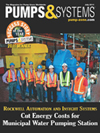 If for some reason, the flow has been reduced to 50 percent of the original design, a better energy saving may be obtained by installing a variable frequency drive (medium voltage for this application). Impeller trimming is permanent.
If for some reason, the flow has been reduced to 50 percent of the original design, a better energy saving may be obtained by installing a variable frequency drive (medium voltage for this application). Impeller trimming is permanent.
Mallur R. Nandagopal, Ph.D., P.E.
Senior Engineer, City of Spokane Water Department
Lev Nelik responds:
You have a good point. Speed reduction via a variable frequency drive (VFD) is more flexible versus irreversible impeller trim. However, especially for municipal applications and for systems where friction head is small in relation to the static head (mostly lift), speed reduction by VFD (or trim) could be problematic. The reason for that is, per pump affinity laws, speed reduction carries with it not only flow reduction but head reduction as well. With relatively small speed change, the entire pump curve can easily dip before the system head, making a pump effectively shut-off hydraulically. I see VFD systems for such applications all over the U.S. and internationally and must admit many have issues.
Mallur Nandagopal responds:
As per the article, if the flow has been reduced to 50 percent, changing the impeller diameter is not only permanent but, also, efficiency will not be achieved. Changing the speed with a VFD keeps the efficiency almost constant and is not permanent. The TDH at lower flow will be lowered as friction losses reduce.
"The 'Real Golden' Age of Sealles Pumps," November 2011
Click here for full article.
 We’re responding to the November feature by Dale Evers on “The ‘Real’ Golden Age of Sealless Pumps.” We agree that the pump and sealing industry have experienced tremendous change during the last 20 years. Major consolidation of manufacturers from both sectors has reshaped the market. One such advancement is the documented product performance and reliability once thought of as being totally unattainable with mechanical seals.
We’re responding to the November feature by Dale Evers on “The ‘Real’ Golden Age of Sealless Pumps.” We agree that the pump and sealing industry have experienced tremendous change during the last 20 years. Major consolidation of manufacturers from both sectors has reshaped the market. One such advancement is the documented product performance and reliability once thought of as being totally unattainable with mechanical seals.
For example, 20 years ago, the average mean time between repair (MTBR) in the chemical industry was around 12 months. Today it is closer to 30 months. The petroleum industry also has improved with MTBR increasing from 24 months to more than 60 months in most cases. In essence, mechanical seals have gained the reputation and demonstrated the ability to meet or exceed the requirements for “best available control technology.” Further, mechanical seals remain an economical and energy efficient technology that meets all the current emission and environmental regulations.
In reality, the tightening of control guidelines and regulations became the golden age of mechanical seals. It forced the industry to look at the design, materials, the pump-seal chambers, face geometry to stabilize lubrication and all aspects of this technology.
Along with meeting the control, containment and emission requirements today, mechanical seals also allow sealed pump technology to run at demanding high temperatures, incorporate the use of VFDs, minimize energy consumption, and use materials that are readily available and environmental safe to obtain. In contrast, lot of sealless technology options, even the most advanced designs, do not provide such benefits.
In conclusion, both technologies should be evaluated as viable options to handle the movement of all types of process fluids throughout industry.
Phil Peck, FSA-Mechanical Seal Division
"Pump Optimization & Efficieny," September 2011
Click here for full article.
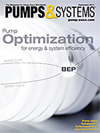 Your pump magazine gives excellent information for how we can think and achieve optimization and pump efficiency.
Your pump magazine gives excellent information for how we can think and achieve optimization and pump efficiency.
Saubhagya Rathore
Senior Mechanical Engineer-LAB
Mechanical Maintenance, Gujarat Refinery
Indian Oil Corporation Limited, Vadodara

